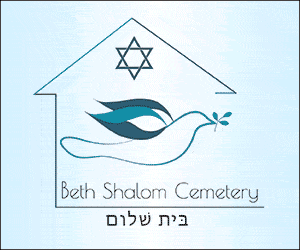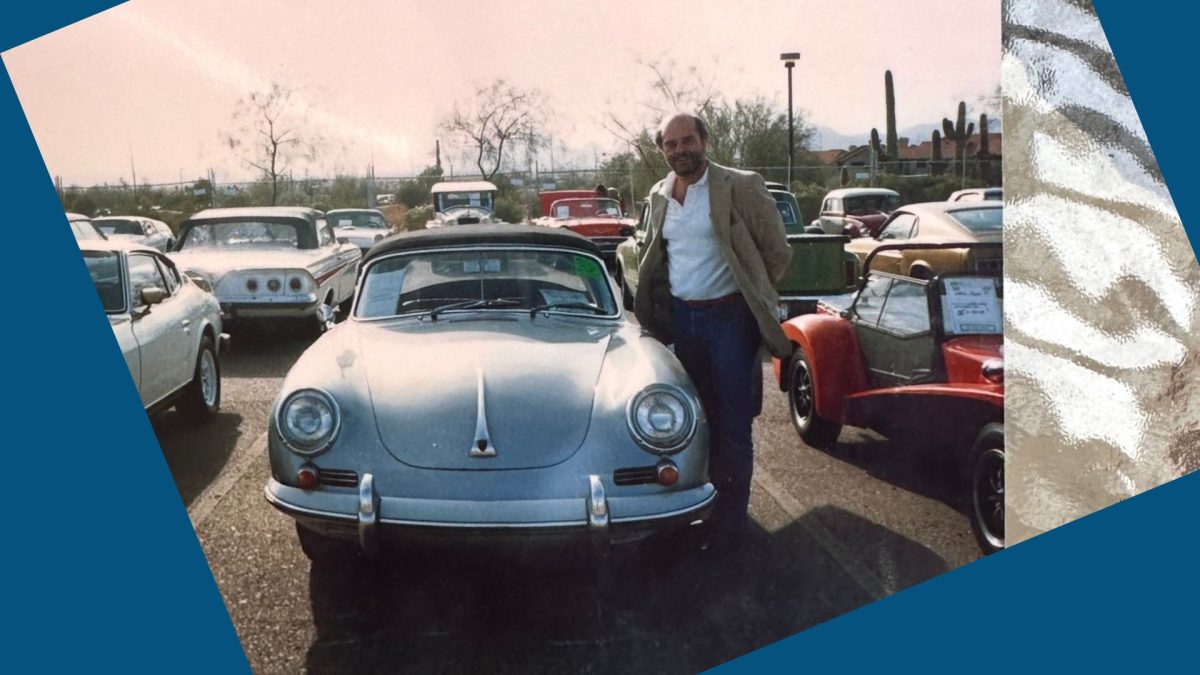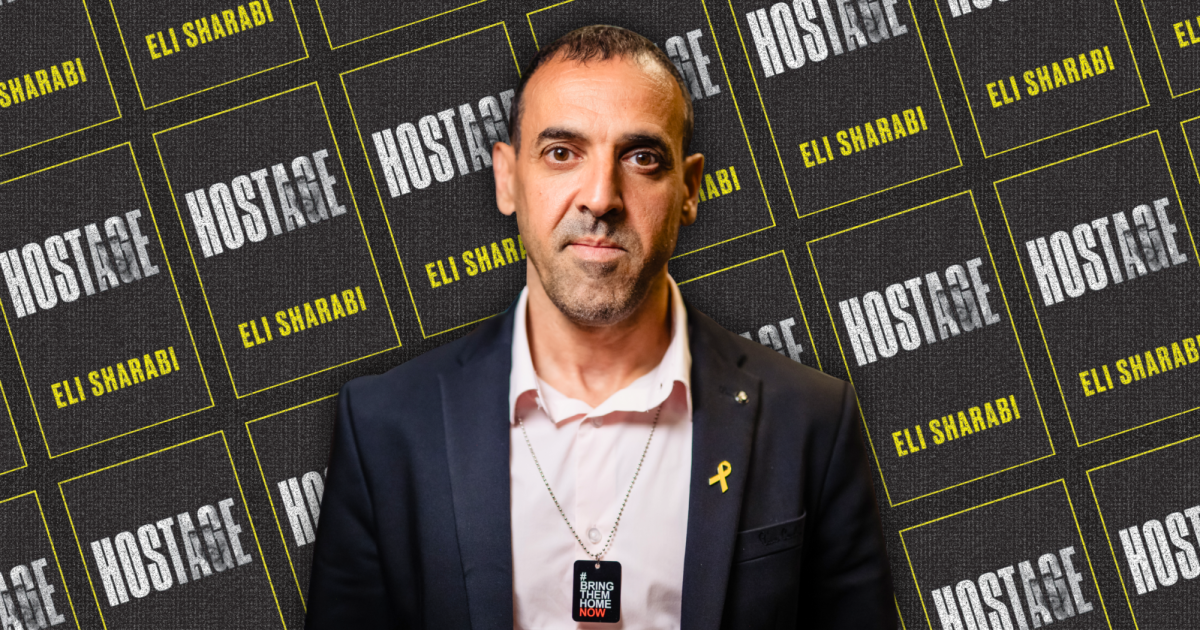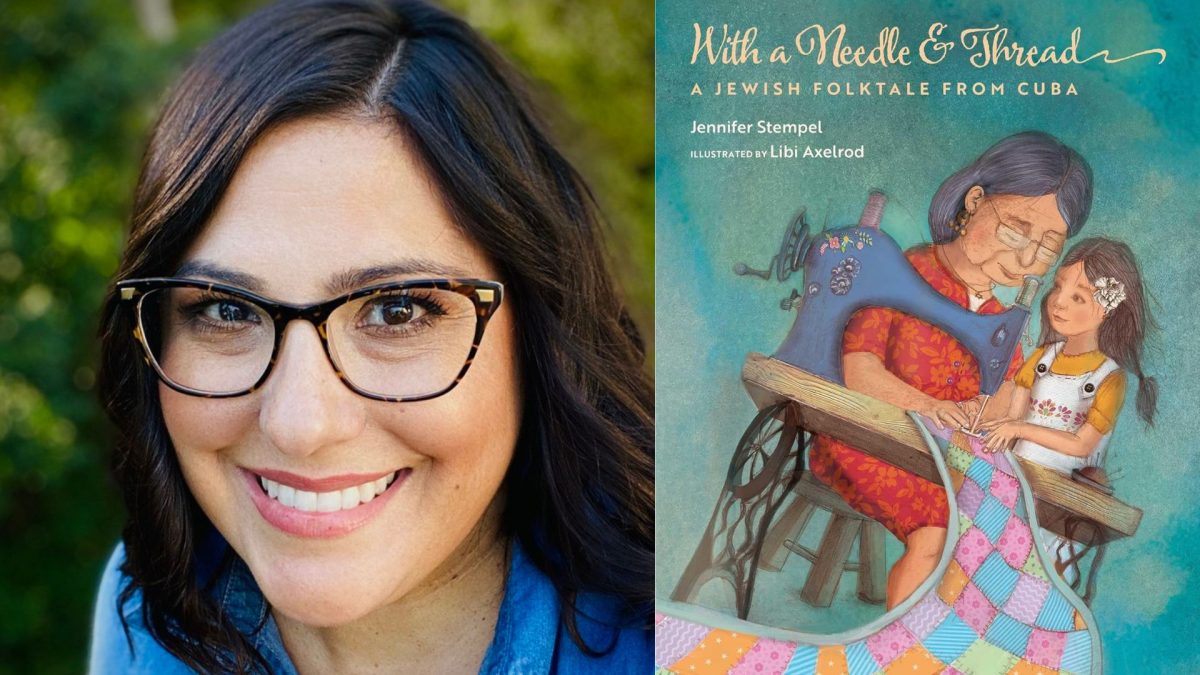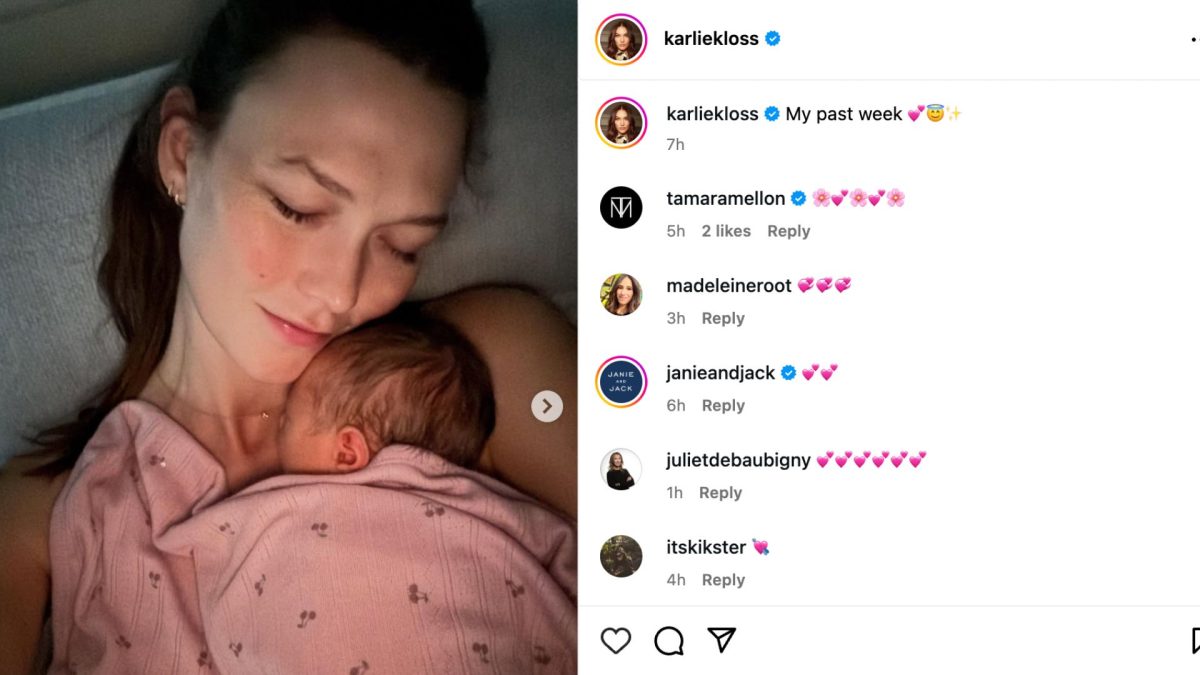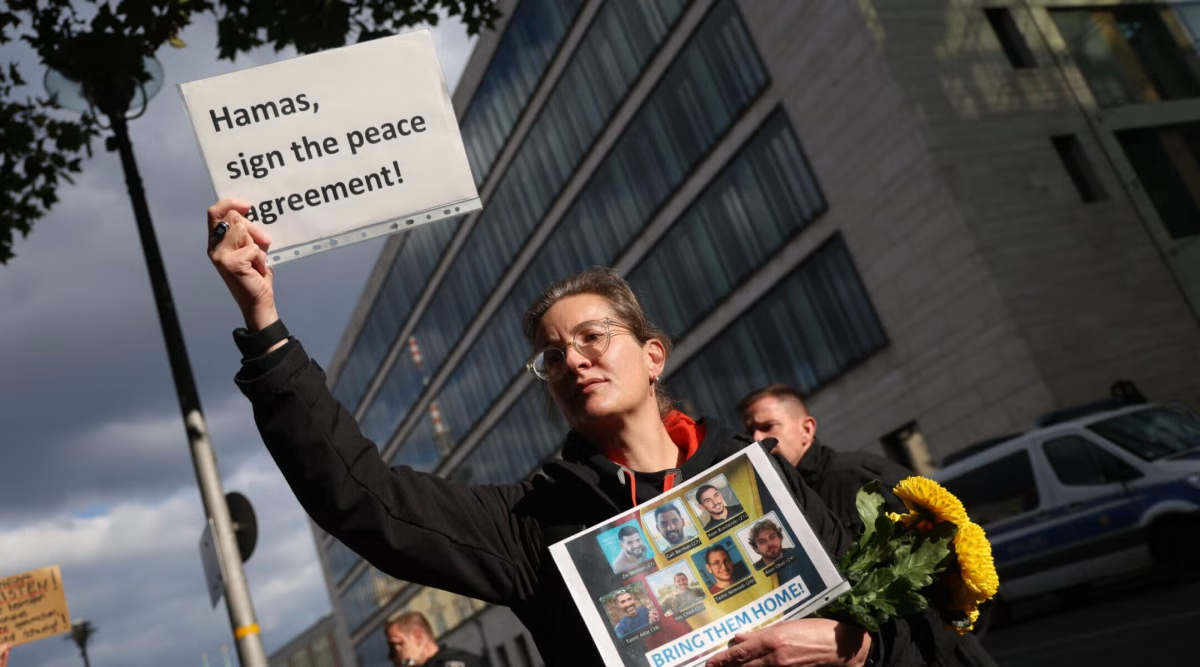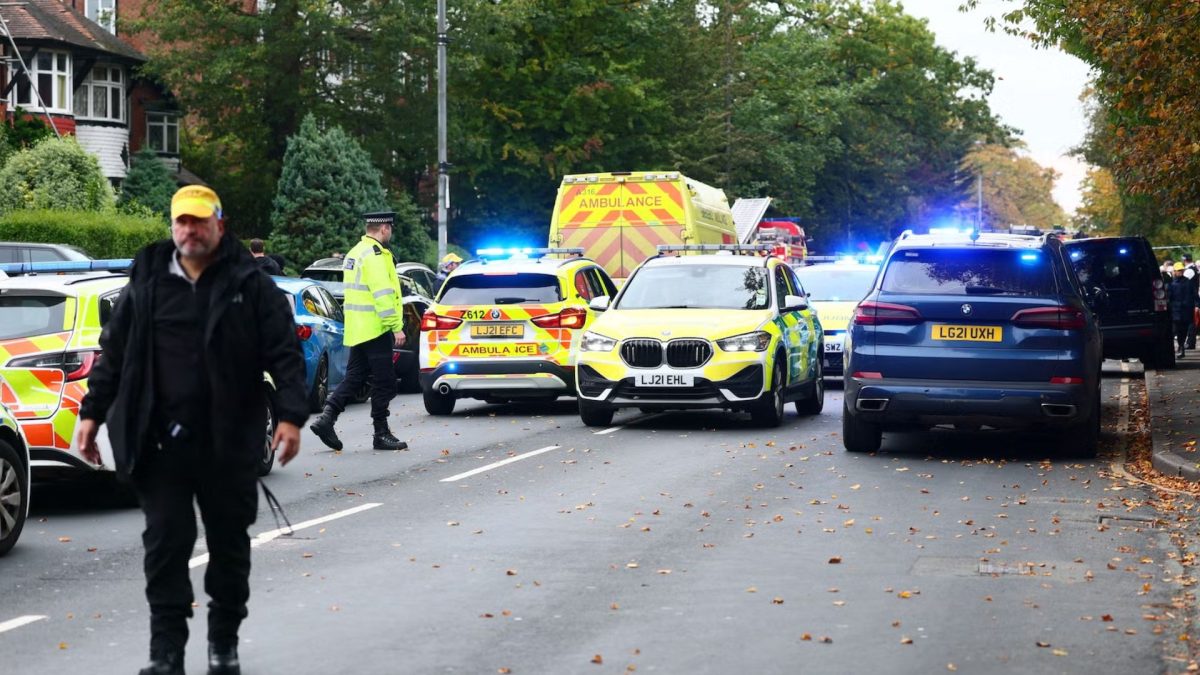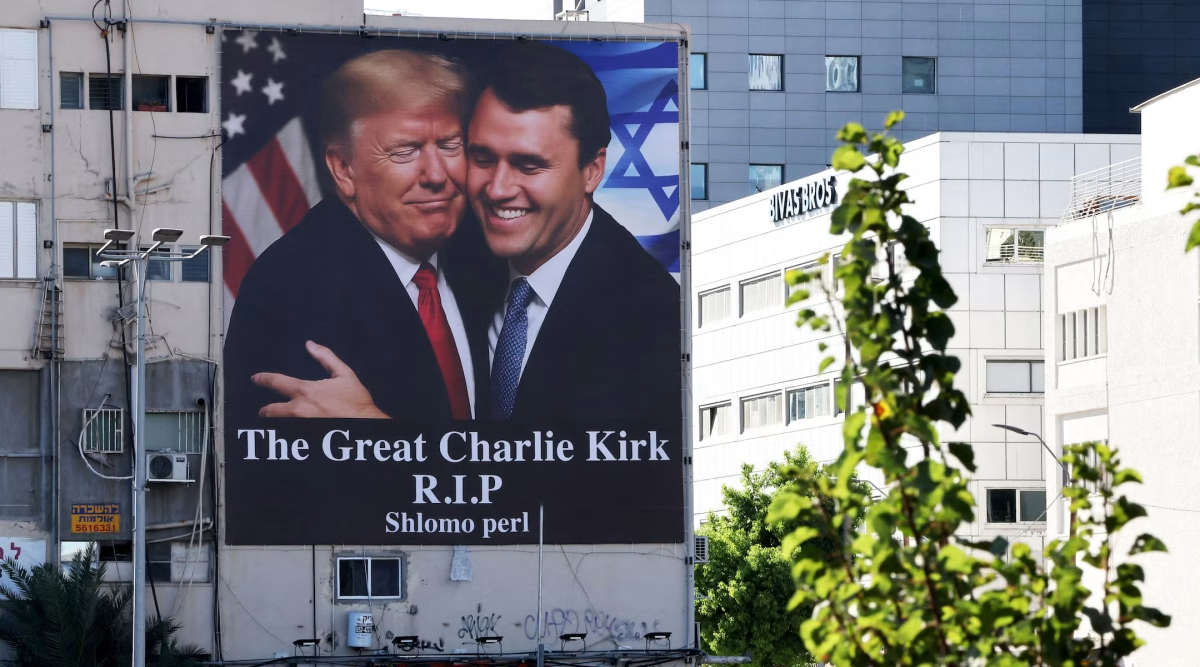Late night sirens don’t bother Ben Senturia. They are a conspicuous reminder that he lives in an urban environment.
“At night, it feels like I’m in a real city with lots of activity, as opposed to a quieter residential area,” said Senturia, 81. “There’s something nice about being in the middle of the city and all the sounds that you get.”
Senturia is a Jewish city dweller, and he is not alone. The 2024 Jewish Federation community study released earlier this year revealed that 22% of the local Jewish population lives in the city of St. Louis. Ranking second with 21% is University City/Clayton. Creve Coeur ranks third with 19%.
ADVERTISEMENT
The Jewish geographic shift comes at a time when the overall city population has been shrinking. The U.S. Census Bureau reports that from 2020 to 2024, the city lost nearly 21,700 residents. This re-urbanization is not unique to St. Louis, said Matt Brookner, associate research scientist at the Cohen Center at Brandeis University.
“This is the general pattern we see in many of the communities we’ve studied over the last decade where the Jewish concentration had been in suburbs,” said Brookner, who worked on the Jewish Federation of St. Louis study. “Over the last 10 to 20 years there’s been a re-urbanization of where Jews live.
“It’s particularly acute in the Midwest. Within the last decade, we’ve done studies of the Twin Cities, Cincinnati and Kansas City. It’s a trend we see in many of these communities.”
The total land area of St. Louis City is 61.7 square miles. By comparison, Chesterfield covers 31.8 square miles, and Creve Coeur has 10.2 square miles. Within the city, the Jewish households tend to live primarily in and around Forest Park, the Central West End and Tower Grove Park. The age range of Jewish adults in the city is largely 22 to 54.
Vibrant, diverse lifestyle
ADVERTISEMENT
One factor that may draw Jews and non-Jews alike to the city is a lower cost of housing, Brookner said.
“There are all kinds of cultural and diversity reasons, but the big one is affordability,” he said. “Over the last 10 years, millennials have been buying homes in cities where it’s been affordable.”
That was how Shira Berkowitz ended up in Fox Park, bordered by Gravois Avenue and Interstate 44.
“I grew up in the county, and then my first apartment was with one of my best friends in Richmond Heights,” said Berkowitz, 39, who attends Kol Rinah and Central Reform Congregation. “When it came to finding an apartment by myself, I was really outpriced anywhere except the city.”
Berkowitz found the city to have other great features, especially a vibrant, diverse culture. That environment — and a lively music scene — is what drew Jeremy Segel-Moss to Cherokee Street.
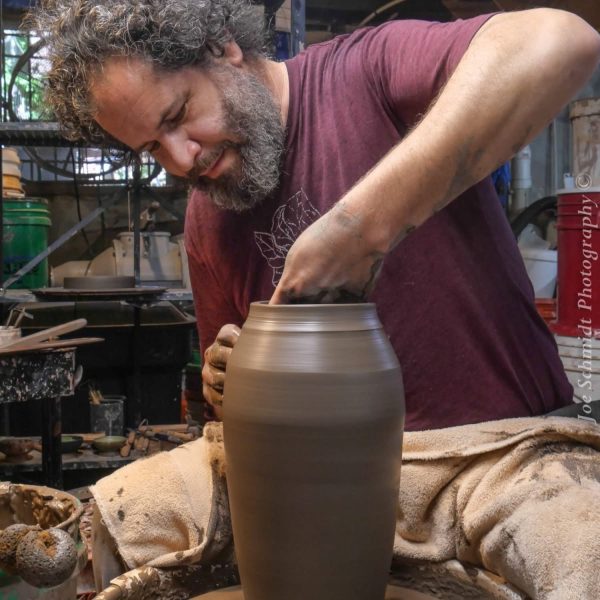
“I was raised in U. City and Clayton,” said Segel-Moss, 49. “I had finished school at Washington State, and I joined a circus. Then my RV blew up, and I came back to St. Louis. The few people I knew who were still in St. Louis were in the city. I came straight to the south side. I lived off Grand for a little while. And I bought this house on Cherokee about 15 years ago.
“It was pretty cheap to live down here, to be a full-time artist among other artists,” added Segel-Moss, who was a musician before he pivoted to becoming a ceramic artist. “We have one of the greatest music cities in the world, and those musicians primarily live in the city.”
Looking out on the park
Dennis Multack grew up in University City. He lived in other parts of the country for 25 years, then returned to Clayton in 1990. He now lives near DeMun, just east of the Clayton-St. Louis limits. The biggest advantage is proximity to nature.
“I’m in the city, but it’s not too dense,” said Multack, 78, who is a member of CRC. “It’s just a more interesting lifestyle. I live right across the street from Forest Park, which is beautiful. I walk through the park quite a bit.”
Another neighborhood popular with Jewish city dwellers is Tower Grove South. That’s where Jeff Gold settled in an early 20th century home overlooking Tower Grove Park.
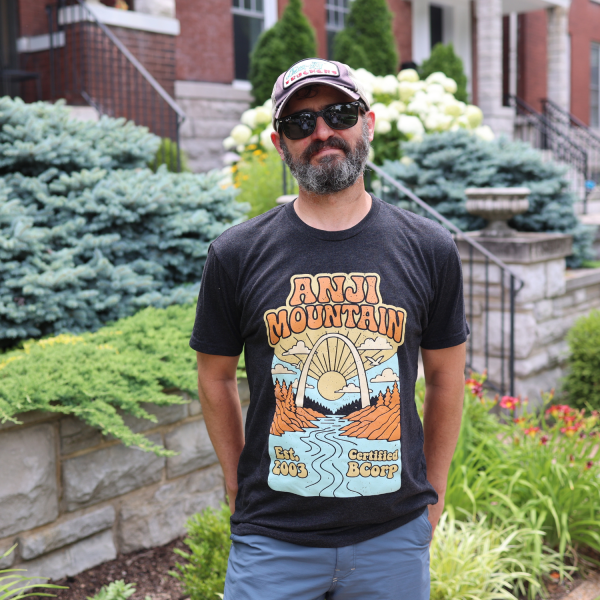
“The park is priceless — it’s my front yard,” said Gold, 51. “I can’t put a price on it. We spend so much time down there, practically every day, whether it be walking or bike riding. It has the best farmer’s market in town. The park is just a gem. It really shapes our life.”
Gold said city living also means being able to walk to a wide variety of ethnic restaurants along South Grand Avenue. He said the city has a vitality that’s missing in the suburbs.
“I can go outside on my porch, have a cup of coffee or a beer, and I don’t have to interact with anybody, but I will engage with dozens of people in the community as they’re walking by my front door,” he said. “I’ll say hello and soak up the sounds and the vibes of the community.”
Gold, who is a member of Congregation Shaare Emeth, said having school-age children in the city requires a parent to research and plan for the best education opportunities, but it isn’t an insurmountable challenge.
‘We know all our neighbors’
About a mile north, Carly Ferdman and her husband, Adam Didier, also faced a decision about schools. They chose the Shaw neighborhood near Tower Grove Park specifically because it was close to the highly regarded City Garden Montessori School.

Ferdman and Didier, both 35, had been living in Chicago along the CTA Red Line and in the Pilson neighborhood. In 2020, as the pandemic began, they moved back home to be closer to family and find a lower cost home.
“We were worried when we moved back because we had really grown to love city living, walkability and knowing your neighbors,” said Ferdman, who is involved with MaTovu, which describes itself as “an inclusive Jewish ‘neighborhood center’ ” located in the city’s Botanical Heights neighborhood.
“We landed in Shaw, which turns out was great. We have all the things that we loved about being in Chicago, but we pay a third of the price for housing,” added Ferdman.
Being close to Tower Grove Park and the Missouri Botanical Garden is a plus, she said.
“We really have a good community here,” she said. “Our little neighborhood is close. We know all our neighbors. Especially now that we have two kids, it’s great to have support nearby.
If we feel like having a date night, we can walk down to South Grand. It opens a whole world of entertainment and food.”
Another Jewish family near Ferdman and Didier had the same experience. Katie Garland and her husband, Paul Sorenson, live in Botanical Heights.
“We love the walkability,” said Garland, 37, who attends Shaare Emeth and CRC. “It feels like a very family friendly life, being able to walk to school, walk to a park, put the kids in a wagon and go on an adventure to get coffee or doughnuts. Having those resources right there, especially with small children, it feels like a really lovely way to live.”
Garland grew up in Ladue, which has a decidedly different vibe. She and Sorenson are founding members of MaTovu, located just blocks from their home.
“We actually go past it every day when we walk to school,” Garland said. “Being able to go to Shabbat services there or activities or different programs has been a great way to meet the Jewish community in the city.”
St. Louis County has no shortage of parks, but it generally requires a car to get to one. City dwellers can walk out their front door and step into a park. Cheryl Adelstein lives across the street from Benton Park in south St. Louis. She’s lived in the city for nearly 35 years.
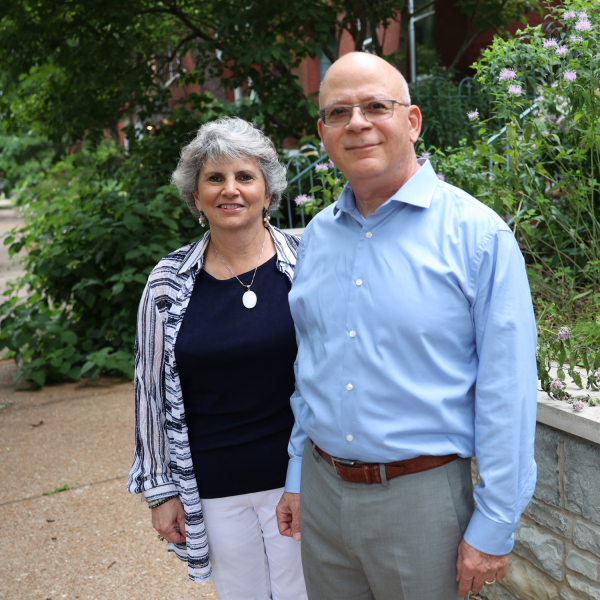
“I grew up in St. Louis County,” said Adelstein, 62. “My husband grew up in and around downtown Stamford, Conn. When he moved to St. Louis in 1989, he wanted to live in the city when we started dating. In my 20s, I lived in Washington, D.C., and Philadelphia for college, and I loved urban living. So, I was very excited to join him in this expedition to the city.
“We love our home and our neighborhood,” said Adelstein, who attends CRC. “All kinds of different people can live together in the same neighborhood. We liked the fact that many different ethnicities and races live in the community together.”
Return to geographic origins
In the early 1900s, St. Louis saw an influx of Jewish immigrants from Eastern Europe. According to the St. Louis Genealogical Society, they primarily lived in north St. Louis between Cass Avenue and Delmar Boulevard. Eventually, the Jewish population moved west to Grand Avenue and eventually the Central West End and University City.
A wide range of Jewish merchants flourished on the near north side. The Jewish Community Center was originally in the city. The Jewish Hospital of St. Louis, now part of BJC, was established in 1902 on Delmar Boulevard near Union Avenue before moving to 216 South Kingshighway Blvd.
While most congregations and Jewish organizations are now in the suburbs, CRC and MaTovu provide a strong Jewish presence in the city. Could additional resources benefit Jewish city residents?
The Federation community study was a starting point in addressing that question, and Federation plans to continue investigating it, said Karen Sher, chief impact officer.
“Right now, we are still gathering information from community partners,” Sher said. “We’re trying to understand how important it is for them to live near Jewish institutions. Maybe there are other ways to appeal to people who live in the city to engage them Jewishly.
“We want to get a better sense of that before we do any kind of community planning. We also set aside funds to do some of these deeper dive market research focused areas that we need to identify. We’re definitely looking at ways to understand more given the data.”



